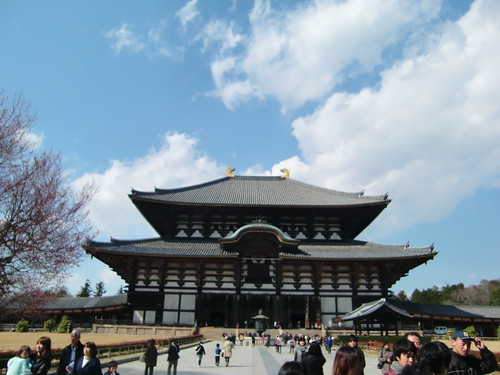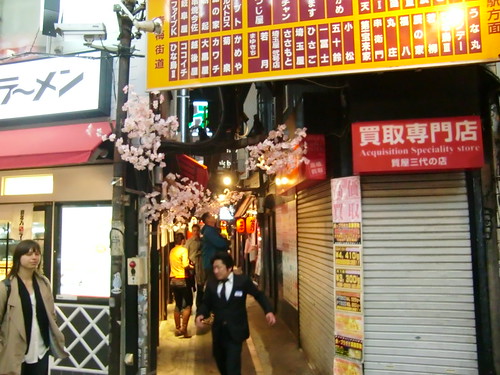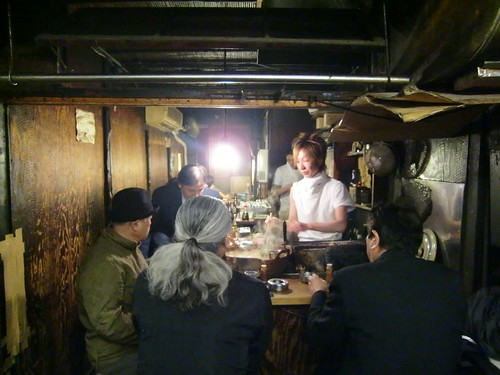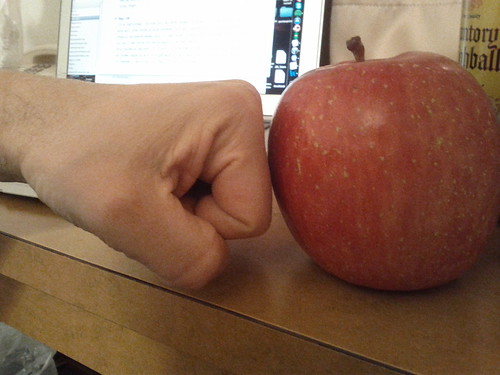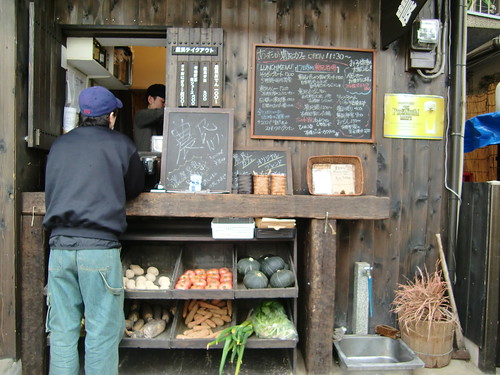Day 7
Discovered quite lovely breakfast menus at our downstairs coffee shop, Rococo. Waffles, yogurt, drip coffee and salad make for a good start. The weather was lovely, so we rented bikes and did a few loops in and around the park in Nara. The park takes up a big chunk of the Eastern part of the city, and features some of the most impressive temples — and free roaming deer. Hundreds of deer, which are somewhat sacred and thus absolutely comfortable in the presence of people. Maybe a bit too much so.

The deer are used to people, and are expecting to be fed crackers roasted for them in throughout the park.
Freshly roasted crackers are sold across the park, so you can feed them too, and yes, there’s a certain chance that they can smell the crackers in your pockets. Wandering in the woods and between the parks, Japan unfolds its particular magic, with mossy-green stone lanterns, red Shinto gates, and the free-roaming deer in between. Also, the biggest temple is quite that – one of the (maybe the?) biggest wooden structure in the world, housing a Buddha statue, and interestingly not even the size it once was, but a reconstruction built at 2/3 of the original size. Incredible, impressive.
Yummy Okonomyaki for dinner, and by that time we decided to skip all our alternative plans for the next two or three nights and head straight back to Tokyo.
Day 8
Kicked off a gorgeous, sunny day with a run through the park, again among deer and shrines before jumping on the Shinkansen back to Tokyo. Surprised, and somewhat disappointed, that not even in Bento boxes for an on-board lunch it’s easy to find a vegetarian meal for M. Given the ingredients, Japan could do better that way. That said, the food is still quite amazing. Wandered around Shinjuku and Shibuya, more steamed vegetables before heading to so-called Shomben Yokocho, or Piss Alley, a tiny alley next to Shinjuku station where maybe two dozen small food stalls and bars have specialized on Yakitori (meat skewers, grilled on charcoal grills), sake and beer.
Sitting on a cozy bench along with the other patrons in between dark, wooden, sooty walls, I watch the bar man alternating grilling my Yakitory sticks and pouring sake for business men in suits – always to the point where it overflows the glass and into a little dish, requiring the patrons to leave the glass on the counter and slurp off a bit before being able to lift the glass at all. It’s smelly, it’s slightly greasy, and it’s spectacularly yummy and atmospheric. We leave smelling of grill, and quite happy. In between the many overflowing stalls there are three that stand out a bit to me: One is completely empty; but it can’t be that bad, otherwise it would’ve gone out of business, right? One looks like a chain store of sorts. One is a tiny, tiny, tiny hipster bar. Maybe four seats? Heavy wood, what looks like a very decent collection of bottles behind the counter, slightly kitschy decoration, and a hat wearing hipster bar keeper. We’ll have to come here another day. Then, to top things off, I’m fulfilling a youth dream of mine and we head to a manga kissa, a manga & internet café where you rent a little cubicle for a few hours to read manga, surf the web, watch DVDs or play Playstation. It’s the ultimate Japanese youth experience to come here and hang out, and to sleep here if you miss the last train home to your suburb. Besides internet access and reading material, it also provides solutions for other essential needs, like coffee, chicken nuggets and soft ice cream.

Bookshelves at a manga kissa at Shibuya
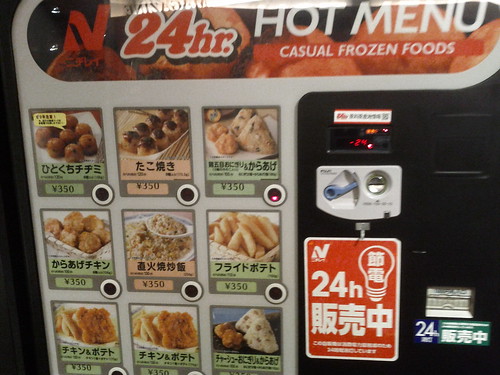
Vending machine at the manga kissa
We spend the night here, not quite stretched out. In fact, despite the cubicle being quite spacious all things considered, I have to lie diagonally to even remotely stretch out my legs. Still, I wouldn’t miss it for anything and drift off to sleep.
Day 9
Somewhat tired and feeling crumpled, we move our stuff to a hotel and do a little planning and map syncinc (paper, since still without a data plan), then off to another gorgeous day. Super lucky with the weather. Imperial gardens, the posh shopping area of Ginza – quite underwhelming since it’s really just the usual suspect of global premium brands -, poking heads into the Muji flagship store and the Leica Ginza Salon. Back to Shibuya after a long day of walking for some shopping, a couple of small galleries (one was Parco Factory), dinner and drinks with Ryo, an old friend from university who I hadn’t seen in years, and who’s using his Friday night to hit town with his friends. We join them for part of the way – warmup drinks only, really – and crash in a slightly French-themed hotel. French-inspired being quite a common theme around here. Will have to dig deeper into that.
Day 10
It’s Saturday. Since our Airbnb doesn’t start for another day and all the hotels are booked out all around us (it’s a weekend, cherry blossom week and, I believe, start of the new school year or so), we have to move again. We serendipitously visit the farmers market in front of the UN University and stocking up on some bagels and a huge apple. All apples in Japan are huge, it seems:
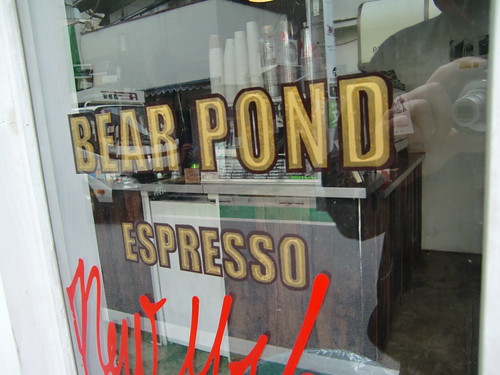
Bear Pond Espresso, Shimo-Kitazawa
A quick detour to test out Bear Pond leads us to an absolutely lovely neighborhood called Shimokitazawa just a bit West of Shibuya, full of small local shops in between vintage stores and cafés, like this one:
It’s a project run, as far as I understand it, by a crew that runs three cafés and several small farms across Japan. Everything you eat is grown by them, they farm themselves. The project is called something Future, something in this case being a Japanese word that contains a pun I’m not sure I got right. I believe it means “agriculture” – no, or similar – sounding a bit like the words “no future” and “agriculture future”, or at least it is this spirit of believing in the importance of locally grown food that seems to be at the core of this. The English tag line of the line of t-shirts and overalls that come with the logo says “street peasant shop“:
If anyone here can explain the name any better, please let me know!
Update: (nou/noh) means agriculture or farming. Thanks, Tam!
Anyway, the food — vegetable curry, rice and yasmine tea for me, a selection of five different starters for Michelle — was excellent, and everyone super helpful and friendly. That discovery done, we headed over to the big park off Harajuku, known best for the famous Harajuku girls, who dress up in cosplay and pose for photos. We saw practically none of them; maybe this particular thing is over at last, or it was the thousands of visitors who were packed in the park to picnic under the cherry blossoms. It was after all an important day, and there weren’t exactly lines leading into the park, but a slow mass of people meandering into and out of the park. We seal the evening with a quick swing-by over at Roppongi, but the office & shopping towers are so corporate-sterile and over the top that we don’t stay long – but we’ll come back for an extensive tour of the Mori Art Museum and the view from a viewing platform up top. I was promised Blade Runneresque views, and there, at night, is where I’m expecting to get them in full.
